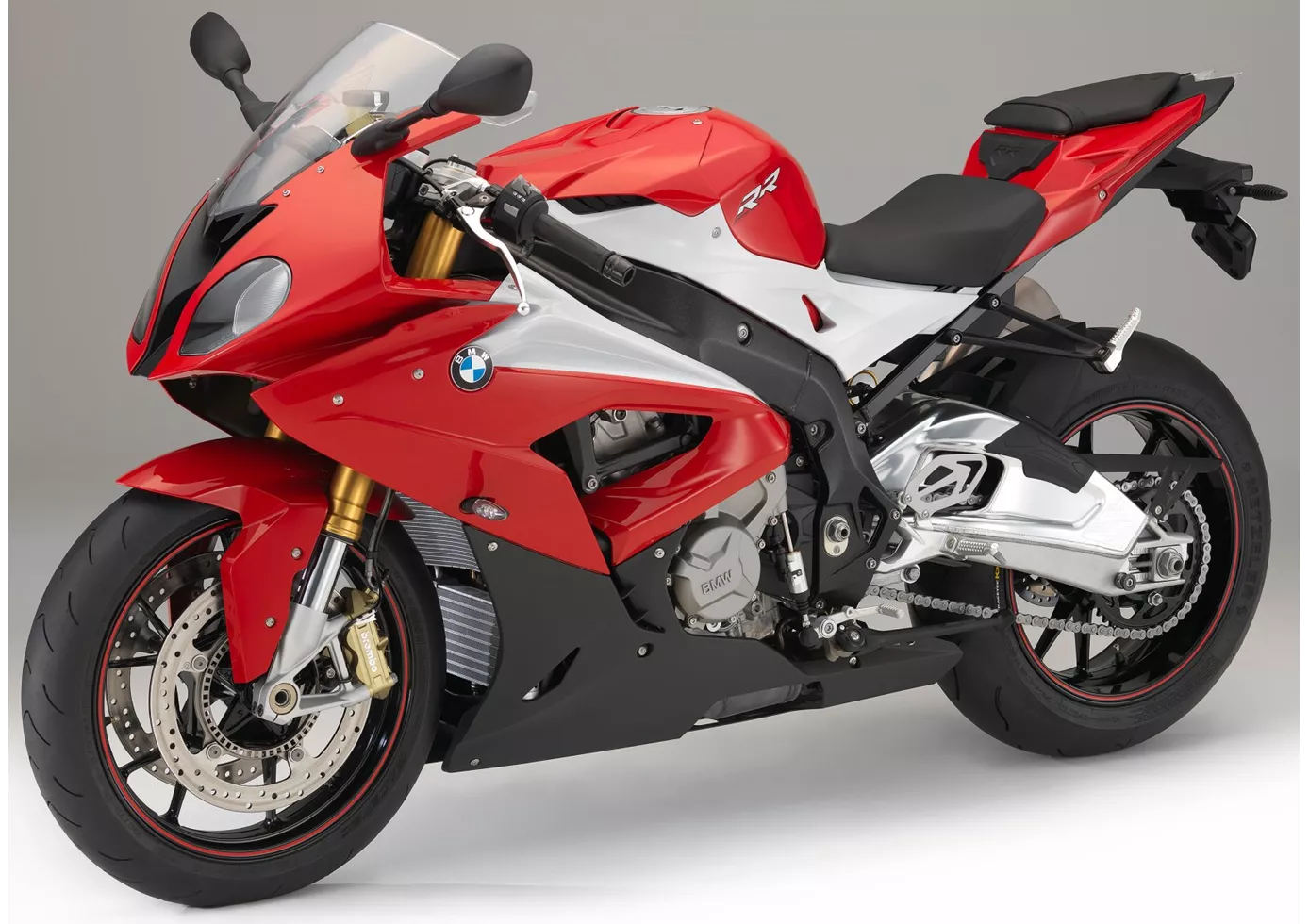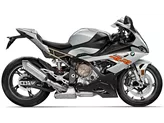BMW S 1000 RR 2015 vs. Yamaha R1 2015

BMW S 1000 RR 2015

Yamaha R1 2015
Overview - BMW S 1000 RR 2015 vs Yamaha R1 2015
The BMW S 1000 RR 2015 and the Yamaha R1 2015 are both powerful and high-performance supersport motorcycles. They have similar engine specifications, with both bikes having a 4-cylinder engine and a displacement of around 1000cc. The BMW has a slightly larger bore of 80mm compared to the Yamaha's 79mm, but the Yamaha has a slightly longer stroke of 50.9mm compared to the BMW's 49.7mm. In terms of power, the BMW produces 199 HP while the Yamaha produces 200 HP. Both bikes have a compression ratio of 13.
In terms of torque, the BMW produces 113 Nm while the Yamaha produces 112.4 Nm. The BMW has a twin-tube aluminum frame, while the Yamaha has a Deltabox aluminum frame. Both bikes have a front suspension with telescopic forks, but the Yamaha has upside-down forks which are known for providing better performance and stability.
Both bikes have double disk brakes at the front, providing excellent stopping power. The BMW has a front tire width of 120mm and a rear tire width of 190mm, while the Yamaha has the same tire widths. Both bikes have a wheelbase of around 1400-1425mm, providing stability and agility. The BMW has a seat height of 815mm, while the Yamaha has a slightly higher seat height of 855mm.

BMW S 1000 RR 2015
In terms of weight, the Yamaha is slightly lighter with a kerb weight of 199kg compared to the BMW's 204kg. Both bikes have a fuel tank capacity of around 17 liters.
The BMW S 1000 RR 2015 has several strengths. It has a superb shift assistant, allowing for smooth and quick gear changes. The engine is incredibly powerful and rev-happy, providing exhilarating performance. The bike also has a great range of accessories available, allowing riders to customize and enhance their riding experience. Additionally, the BMW has a race-ready data logging tool and calibration tool available, which can be useful for professional riders or those looking to improve their performance on the track.
The Yamaha R1 2015 also has several strengths. It has a crazy sound, which adds to the overall excitement and thrill of riding. The engine is rev-happy and has a strong peak, providing a thrilling racing feeling in the saddle. The bike also has a superior electronics package, which includes advanced features such as traction control and multiple riding modes. The Yamaha is also known for its high-quality workmanship, ensuring durability and reliability.

Yamaha R1 2015
However, the BMW S 1000 RR 2015 does have a weakness. The chassis can reach its limit quickly in the hands of professional riders, meaning it may not provide the same level of stability and control at high speeds or on the track.
Similarly, the Yamaha R1 2015 has a weakness. It experiences torque sag in the middle, which means there may be a slight dip in power delivery at certain RPM ranges. Additionally, some riders have reported stability issues in the braking zone, which may affect confidence and control during aggressive braking maneuvers.
In conclusion, both the BMW S 1000 RR 2015 and the Yamaha R1 2015 are powerful and high-performance supersport motorcycles. They have similar engine specifications and offer thrilling riding experiences. However, the BMW offers a superb shift assistant and a range of accessories, while the Yamaha has a crazy sound and a superior electronics package. Both bikes have their strengths and weaknesses, and riders should consider their preferences and riding style when choosing between the two.
Technical Specifications BMW S 1000 RR 2015 compared to Yamaha R1 2015
Pros and Cons in comparison
Pros and Cons in comparison
BMW S 1000 RR 2015

The BMW can still score points with hard facts in 2015. If you like top performance, you have to buy the BMW. It turns out incredibly powerful at the top and drives away the rest of the field from 200. Big and heavy riders will be able to benefit from this even more. BMW didn't make it easy for themselves with this bike and put together a very universal motorbike. If you were to do a comparison test with 50 different riders (from rookie to pro), the BMW would have the best average of all 1000cc bikes. The electronic chassis, but also the riding aids, make the pros fast and the beginners safe on the road. A top recommendation for a very broad target group. Very fast hobby riders will not be 100% satisfied with the standard suspension. If you don't want to modify the chassis, you should rather go for an R1M, a Panigale S or an RSV RF. If you want to convert anyway, the S 1000 RR is the strongest and most universal base. Surprisingly, the powerful machine also rides very well on country roads. All in all, it looks like a compromise, but it never feels like one in practice.
Yamaha R1 2015

The new R1 is a big hit and no longer compares to the previous model. This was considered a good country road bike and heavy investments had to be made for excursions to the race track. Now it is the other way round. The new R1 has been developed with a clear focus on the race track. The electronics package seems outstanding, technology freaks will get their money's worth. Yamaha fans have to buy it, they finally have a worthy motorbike. The R1 has slight weaknesses when braking - it becomes a little unstable here. If you want to buy a ready-made racing bike without having to work on the chassis, you'd better go for the R1M. The Öhlins electronic suspension works perfectly and has no weaknesses. For pure racetrack use, the second weakness of the R1 can easily be ironed out. The torque hole in the middle can be easily ironed out with a new mapping.
Price Comparison Avarage Market Price BMW S 1000 RR vs Yamaha R1
There are a few key differences between a BMW S 1000 RR 2015 and a Yamaha R1 2015. There are the same number of bikes of both models available on the 1000PS.de marketplace, specifically 8. It takes less time to sell a Yamaha R1 with 76 days compared to 77 days for the BMW S 1000 RR. Since model year 2010 1000PS.de editors have written 135 reviews for the BMW S 1000 RR and 80 reviews for the Yamaha R1 since model year 2005. The first review for the BMW S 1000 RR was published on 4/16/2008 and now has more than 4,000 views. This compares to more than 3,900 views for the first review on Yamaha R1 published on 4/28/2003.
























